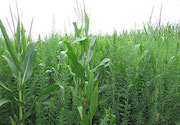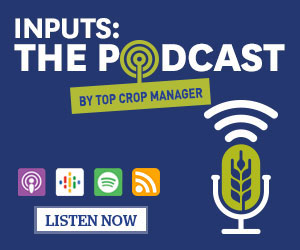| |
| |
 |
 |
| |
 |
|
@{mv_date_MMM d, yyyy}@ |
|
| |
 Can growers use leftover soybean seed that was left unplanted after 2019? An OMAFRA report looks at the factors to consider when deciding whether it’s worth the risk.
» Read more...
Can growers use leftover soybean seed that was left unplanted after 2019? An OMAFRA report looks at the factors to consider when deciding whether it’s worth the risk.
» Read more...
Canadian grain is in high demand as shippers try to feed a growing appetite from mills and governments seeking to shore up staple reserves amid the COVID-19 pandemic.
» Read more...
The average value of Canadian farmland increased by 5.2 per cent in 2019, the smallest increase over the past decade, according to Farm Credit Canada’s latest Farmland Values Report.
» Read more...
|
| |
|
| |

Miravis ® Ace fungicide stacks the deck in your favour, protecting the marketability and quality of your spring, winter and durum wheat from Fusarium head blight infection. The convenient pre-mix delivers preventative and long-lasting protection from all significant Fusarium species, even under hot, humid or wet conditions during head emergence and flowering. Miravis ® Ace also performs more consistently than the competition throughout the labelled application window, so you have the flexibility to spray on your schedule. Discover how Miravis® Ace can help you achieve lower DON levels, higher grain quality, and improved yields here.
Always read and follow label directions. Miravis® is a trademark of a Syngenta Group Company. © 2020 Syngenta.
|
| |
|
| |
 Unfortunately, there are no silver bullets for field crop weed control – successfully combatting weeds takes a toolbox. Studies examining the use of cover crops as a weed management tool demonstrate they can have impressive results when used as part of an integrated pest management program. Researchers at the University of Guelph are looking at how best to use cover crops, including choosing the right variety and where in a rotation they are most effective.
» Learn more
Unfortunately, there are no silver bullets for field crop weed control – successfully combatting weeds takes a toolbox. Studies examining the use of cover crops as a weed management tool demonstrate they can have impressive results when used as part of an integrated pest management program. Researchers at the University of Guelph are looking at how best to use cover crops, including choosing the right variety and where in a rotation they are most effective.
» Learn more |
| |
 While dry bean anthracnose hasn’t been an issue in the past several years, the disease appears to operate in 10-year cycles, meaning it’s due to come back. The disease can cause significant crop damage and yield loss, but researchers in Ontario and Manitoba have conducted three two-year studies since 2008 to better understand the fungus that causes dry bean anthracnose and how to manage it.
» Learn more
While dry bean anthracnose hasn’t been an issue in the past several years, the disease appears to operate in 10-year cycles, meaning it’s due to come back. The disease can cause significant crop damage and yield loss, but researchers in Ontario and Manitoba have conducted three two-year studies since 2008 to better understand the fungus that causes dry bean anthracnose and how to manage it.
» Learn more |
| |
|
| |

|
| |
| TOP CROP MANAGER’S RESOURCE GUIDES |
|
|
| |
The annual fungicide guide, providing information on fungicide products and applications for a variety of crops, specifically for our readers in Eastern Canada.
» Learn more
|
| |
| |







